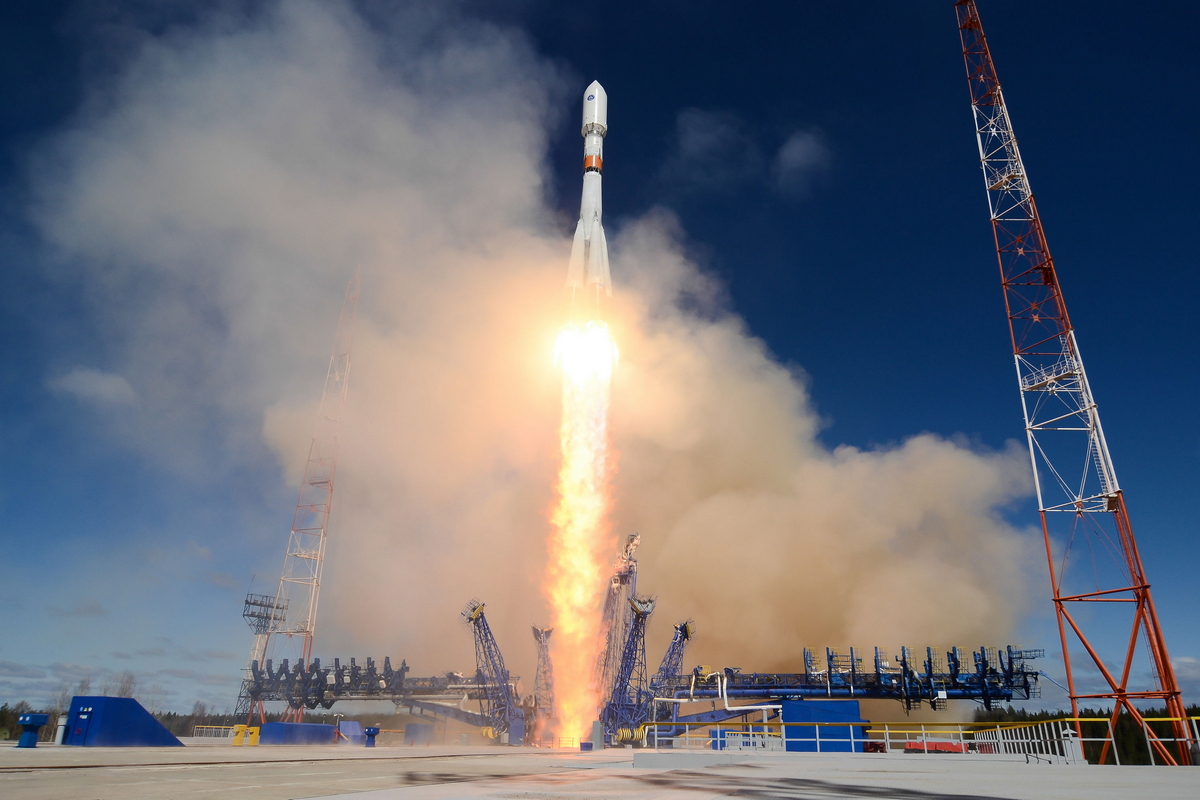EPIC!! Check out this incredible vision captured by Mel Aldridge not long ago at Cashmore near Portland! We're getting plenty of reports. @abcmelbourne pic.twitter.com/1KuldCy6OJMay 22, 2020
Russia launched a military satellite to orbit on Friday (May 22), and the mission generated plenty of action in the downward direction as well.
A four-stage Soyuz-2 rocket lifted off from Plesetsk Cosmodrome in northwestern Russia early Friday morning, carrying a classified payload that's believed to be the fourth satellite for the country's EKS OiBU missile-warning network, according to RussianSpaceWeb.com.
The Soyuz successfully delivered the satellite to its intended orbit, the Russian space agency Roscosmos announced Friday afternoon.
The rocket's third stage was expected to re-enter Earth's atmosphere over southeastern Australia, with any surviving debris from that part of the booster targeted to splash down in the Pacific Ocean south of Tasmania, RussianSpaceWeb.com reported.
Many people in the region, from central Victoria to northern Tasmania, saw a brilliant fireball overhead at the appropriate time, the Australian Broadcasting Corporation (ABC) reported. This was no coincidence; they were witnessing the fiery death of the Soyuz's third stage.

"The slow speed, about 6 kilometres per second, is a very telltale sign that it is space junk," Jonti Horner, an astrophysics professor at the University of Southern Queensland, told the ABC. (Asteroids and other space rocks that slam into our atmosphere are going much faster than that.)
Not every hunk of space junk comes down as quickly as this piece of the Soyuz did. Indeed, Earth orbit is littered with dead satellites, spent rocket bodies and other debris. NASA estimates that there are 500,000 pieces of junk up there at least as big as a marble. And even such small objects can cause serious damage if they hit a spacecraft, considering that bodies in low-Earth orbit zip around our planet at about 17,500 mph (28,160 km/h).
Get the Space.com Newsletter
Breaking space news, the latest updates on rocket launches, skywatching events and more!
- Military space: Spacecraft, weapons and tech
- Latest news about space junk and orbital debris
- Roscosmos: Facts and information about Russia's space agency
Mike Wall is the author of "Out There" (Grand Central Publishing, 2018; illustrated by Karl Tate), a book about the search for alien life. Follow him on Twitter @michaeldwall. Follow us on Twitter @Spacedotcom or Facebook.
OFFER: Save 45% on 'All About Space' 'How it Works' and 'All About History'!
For a limited time, you can take out a digital subscription to any of our best-selling science magazines for just $2.38 per month, or 45% off the standard price for the first three months.
Join our Space Forums to keep talking space on the latest missions, night sky and more! And if you have a news tip, correction or comment, let us know at: community@space.com.

Michael Wall is a Senior Space Writer with Space.com and joined the team in 2010. He primarily covers exoplanets, spaceflight and military space, but has been known to dabble in the space art beat. His book about the search for alien life, "Out There," was published on Nov. 13, 2018. Before becoming a science writer, Michael worked as a herpetologist and wildlife biologist. He has a Ph.D. in evolutionary biology from the University of Sydney, Australia, a bachelor's degree from the University of Arizona, and a graduate certificate in science writing from the University of California, Santa Cruz. To find out what his latest project is, you can follow Michael on Twitter.










